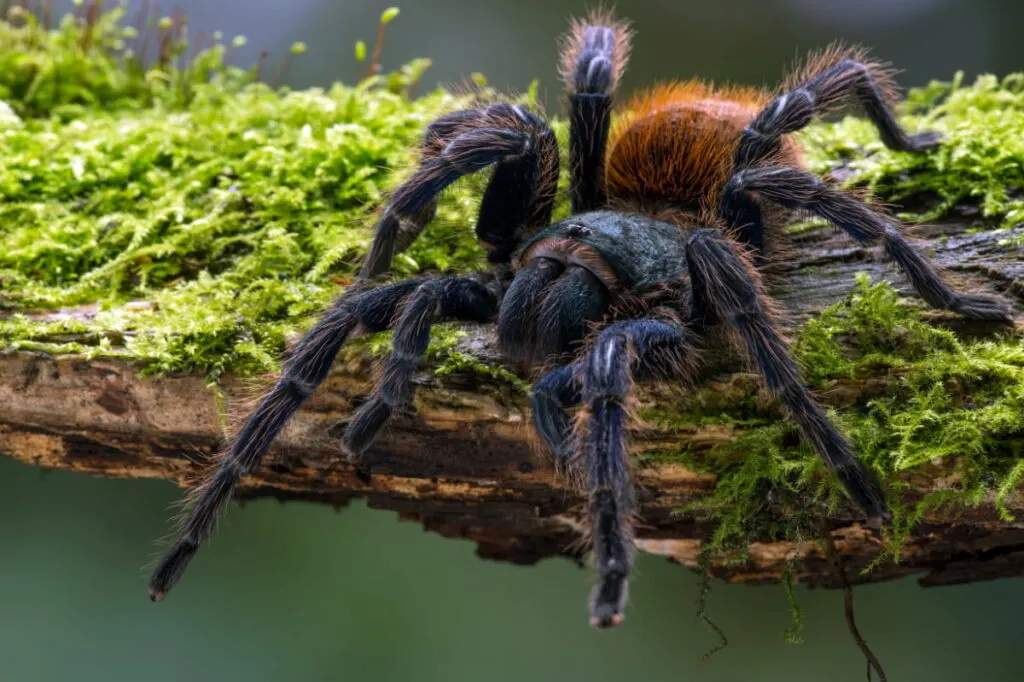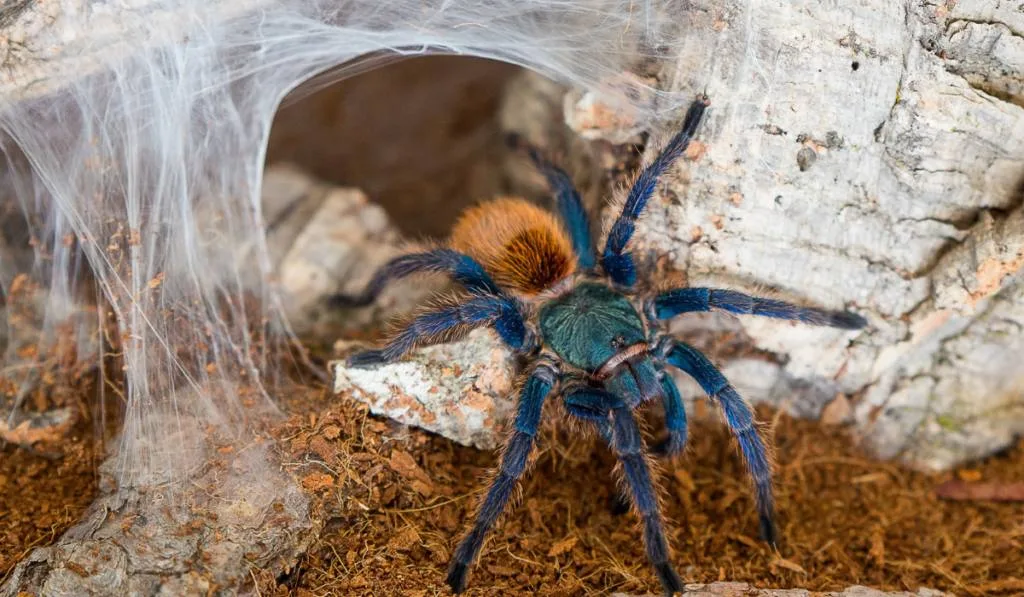I know what you’re all thinking. You’re very apprehensive about getting that pet tarantula your daughter wants or having one crawling up your arm at the nature center show.
You associate tarantulas with Aragog and his children from Harry Potter, who, in The Chamber of Secrets, chased Ron and Harry through the forbidden forest wanting to kill and eat them for dinner!
Or maybe their sheer size and furriness compared to other spiders freaks you out. Tarantulas are to spiders as Godzilla is to reptiles, you say. The unnaturally sized, terrifying version!
Well, we assure you that tarantulas are natural creatures, to start. Tarantulas of all different shapes, sizes, and colors can be found all over the world, more commonly in tropical forest regions.

I assure you that, as people keep tarantulas as pets, tarantulas can be found to be friendly.
In fact, in elementary school, a local nature center came with the creatures in their care to show our class. One of the volunteers brought his pet tarantula, Rosie, who sat calmly on his shoulder the whole time. After the presentation, we were allowed to pet Rosie and even let her crawl on our arms!
And I can assure you that none of us got bitten or attacked by Rosie. The feeling is unnerving, but you can get used to it, so if you are considering getting a tarantula for a pet, it is a cool fear to get over.
So as seen in the example of Rosie, yes, these spiders can be friendly creatures.
Are all tarantulas friendly? Now that’s the real question. There is a big difference between domestic tarantulas and wild tarantulas, and if you want to hear it, read on!
Table of Contents
What Are Tarantulas? Where Are They Found Naturally? What About Domestically?
Tarantulas are a type of carnivorous arachnid. They are the largest type. They weigh about 1 to 3 ounces, and are usually around 5 inches long, with a leg span of more than 10 inches.
In the wild, they can live up to 30 years, but domestically the females live around 15 to 20 years while the males only live 6 or 7 years.
There are over 850 different species of tarantula. They are found mainly in tropical regions, subtropical regions, and deserts. The most densely tarantula-populated continent is South America, with all of its land adjacent to rainforests (especially the Amazon, the largest rainforest in the world).

Tarantulas can be found in the United States, too. American tarantulas naturally dwell in the Southwestern region, such as New Mexico and California (the more desert-like areas).
However, these arachnids can be all over the states as pets in people’s homes or at breeding locations.
If you’re in the market for a pet tarantula, look online to see if there are any breeders in your local area. There are also websites that sell and ship tarantulas from all over the world, which would have more variety if you are hoping for a specific breed of tarantula.
Typically, a tarantula costs around 100 to 150 dollars, but they can get more expensive if you are looking for an exotic or rare species.
Can Tarantulas Hurt You? How Do They Defend Themselves When Threatened?
Surprisingly, no, tarantulas cannot hurt you, not in the vicious way you’re imagining from the cinema or from the way they look in photos.
Besides a painful bite, tarantulas can’t really hurt a person. They have venom, but it’s not even as strong as a bumblebee’s so it may sting a little but nowhere near what you’d imagine from these monstrous arachnids.
It’s interesting because there are forms of spiders, such as wolf spiders, that aren’t even half the size of a tarantula yet can do much more damage. (Don’t ever get bitten by a wolf spider, it will not be fun.)
So you should be cautious enough to avoid a bite, but if you do get bitten, it isn’t the end of the world by any means.

When threatened, tarantulas use their legs to fling these little stinging (or “urticating”) hairs from their stomach to defend themselves.
If you get hit, you’ll feel it because it will give you a rash that’s pretty itchy and annoying, but other than that, no harm. Plus the tarantula will have a naked belly for a while so the embarrassment alone will keep it from doing so unless it’s an emergency!
Some species of tarantula, especially those in tropical regions, have retractable claws on their legs, similar to a cat’s. These are used to grip trees and other uncertain surfaces they may want to run along on.
However, these are not deployed and used for defense when a tarantula feels threatened, so don’t worry about those claws unless it’s climbing on you and it feels like it’s about to fall off! That would probably be about the same sensation as a gecko or other small reptile gripping you for better support, and you should barely feel a thing.
A tip for tarantula owners: If your tarantula is one of these species with retractable claws, don’t get a mesh tank or mesh top to your tank! Your pet spider can climb up it and get its claws stuck in the mesh!
Carnivorous? Do They Eat People? What Do They Eat? What Eats Them?
No! Remember, these arachnids are big for a spider but barely the size of a teacup, so they can’t take on one of us large human creatures! They are carnivorous, but for much smaller prey. They know to pick on something their own size– or even smaller– and not bother us unless we bother them.
Typical spiders spin webs, which doubles as a home and a way to trap their food. Flies, other bugs, and insects can unwittingly stumble into their web and get stuck, wrapped up and their blood sucked out!
However, though tarantulas have silk they don’t use it to spin webs. They catch their prey the old-fashioned way: hunting their next meal on foot. These creatures stalk their prey in the dead of night. Depending on the tarantula’s size, the prey varies.
Smaller species will eat bugs or insects, while the larger tarantulas eat birds, mice, and frogs.
These arachnids use venom to paralyze their victim, then go in for the kill.
Tarantulas are not at the top of the food chain: they have predators of their own. There are hawks specifically called Tarantula Hawks, known for their particular fondness for tarantulas.
Other birds eat tarantulas, such as owls and eagles. Reptiles such as lizards and snakes eat these spiders, and some frogs too from the amphibian side.
Small mammals such as the kinkajou, honey badger, opossum, skunks, mongoose, and coati will see tarantulas as prey. And big mammals like coyotes, weasels, and foxes. Even bugs such as centipedes and scorpions eat them! And of course, you can’t forget humans!
Tarantulas may seem scary, but there are plenty of other animals, including humans, who scare them more.
Resources
- https://thepetenthusiast.com/what-eats-tarantulas
- https://www.thoughtco.com/fascinating-facts-about-tarantulas-1968545
